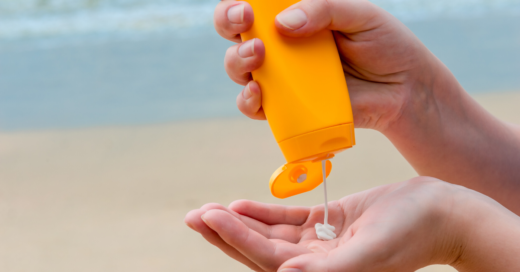
Getting outside does your body a variety of good, and the North Carolina weather allows for that almost year-round. An active lifestyle is vital for your health, both mentally and physically. As you’re soaking up all the vitamin D and benefits of being outdoors, it’s important to make sure your skin isn’t soaking up an excess of the sun’s rays.
Skin cancer is the most common type of cancer. More Americans will be diagnosed with skin cancer this year than all other cancers combined, however, there are many steps you can take to prevent your risk.
Before you head outside, consider these six suggestions for staying safe in the sun, from the doctors of Gaston Medical Partners.
1. Sun Safety Starts Young
In the summer months when school is out of session, children often spend their days in the sun enjoying a variety of outdoor activities. At the same time, UV rays are at their strongest during the summer months.
Damage from UV rays builds over time so starting safe sun practices early is key to preventing a lifetime of damage. Childhood sunburns can increase the chance of skin cancer years down the line.
2. Choose the Right Sunscreen
Not all sunscreens are created equally so it’s important to read the label. Look for “broad spectrum protection” which indicates the sunscreen helps block both UVA and UVB rays.
SPF stands for “sun protection factor” and the American Cancer Society recommends opting for SPF 30 or higher.
3. Apply Sunscreen Before Going Outside
From swimming after you eat to chlorine turning your hair green, there are many myths we hear about hitting the pool. One that’s true is that you should wait after applying sunscreen before hitting the water. In fact, it’s best to take the time to lather up before you even head outdoors.
The chemicals in sunscreen that protect your skin should be given 15 minutes to absorb before you go outside.
4. Apply Plenty – And Reapply
To get the full benefits of sunscreen, apply liberally. Even sunscreens that are advertised as “waterproof” or “water resistant” will wear off.
The Centers for Disease Control and Prevention (CDC) recommends reapplying sunscreen every two hours, or more often if you’re sweating or swimming and toweling off.
5. Don’t Forget Your Eyes and Lips
When applying sunscreen it’s easy to forget your lips. A lip balm with SPF is the perfect addition not just to your pool routine but for everyday use.
Your eyes may not experience what you think of as a typical sunburn, but UV rays have damaging effects nonetheless, putting you at a higher risk for issues like cataracts. The best sunglasses block both UVA and UVB rays.
6. Use More Than Sunscreen
Applying sunscreen is not the only step to preventing UV damage, but one tool in what should be a full box of options. Seek shade to prevent the harshest rays from finding your skin in the first place.
Long sleeves, pants and hats also serve to block you from sun exposure. Not all activities, like swimming, are best suited for cumbersome attire, but even using a coverup when you aren’t in the water will help. Fabric doesn’t block UV rays completely, so applying sunscreen under your clothes serves as another necessary layer of protection.
From exercise to skincare, a trusted primary care physician can help you hone in on lifestyle choices large and small that affect your family’s health.
